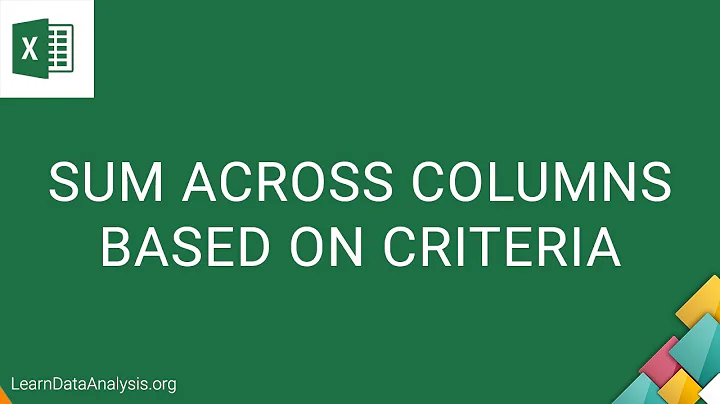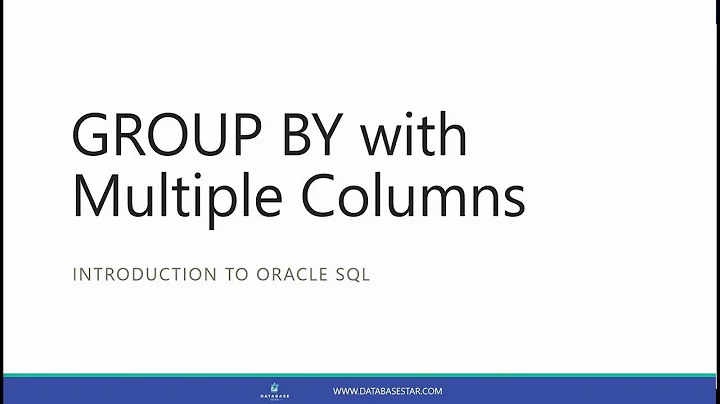sum multiple columns by group with tapply
Solution 1
tapply works on a vector, for a data.frame you can use by (which is a wrapper for tapply, take a look at the code):
> by(df.1[,c(3:5)], df.1$state, FUN=colSums)
df.1$state: AA
apples cherries plums
111 222 333
-------------------------------------------------------------------------------------
df.1$state: BB
apples cherries plums
-111 -222 -333
Solution 2
You're looking for by. It uses the INDEX in the way that you assumed tapply would, by row.
by(df.1, df.1$state, function(x) colSums(x[,3:5]))
The problem with your use of tapply is that you were indexing the data.frame by column. (Because data.frame is really just a list of columns.) So, tapply complained that your index didn't match the length of your data.frame which is 5.
Related videos on Youtube
Mark Miller
Mostly use R, JAGS, MARK, and some C My GitHub page: https://github.com/IcterusGalbula
Updated on July 09, 2022Comments
-
 Mark Miller almost 2 years
Mark Miller almost 2 yearsI wanted to sum individual columns by group and my first thought was to use
tapply. However, I cannot gettapplyto work. Cantapplybe used to sum multiple columns? If not, why not?I have searched the internet extensively and found numerous similar questions posted as far back as 2008. However, none of those questions have been answered directly. Instead, the responses invariably suggest using a different function.
Below is an example data set for which I wish to sum apples by state, cherries by state and plums by state. Below that I have compiled numerous alternatives to
tapplythat do work.At the bottom I show a simple modification to the
tapplysource code that allowstapplyto perform the desired operation.Nevertheless, perhaps I am overlooking a simple way to perform the desired operation with
tapply. I am not looking for alternative functions, although additional alternatives are welcome.Given the simplicity of my modification to the
tapplysource code I wonder why it, or something similar, has not already been implemented.Thank you for any advice. If my question is a duplicate I will be happy to post my question as an answer to that other question.
Here is the example data set:
df.1 <- read.table(text = ' state county apples cherries plums AA 1 1 2 3 AA 2 10 20 30 AA 3 100 200 300 BB 7 -1 -2 -3 BB 8 -10 -20 -30 BB 9 -100 -200 -300 ', header = TRUE, stringsAsFactors = FALSE)This does not work:
tapply(df.1, df.1$state, function(x) {colSums(x[,3:5])})The help pages says:
tapply(X, INDEX, FUN = NULL, ..., simplify = TRUE) X an atomic object, typically a vector.I was confused by the phrase
typically a vectorwhich made me wonder whether a data frame could be used. I have never been clear on whatatomic objectmeans.Here are several alternatives to
tapplythat do work. The first alternative is a work-around that combinestapplywithapply.apply(df.1[,c(3:5)], 2, function(x) tapply(x, df.1$state, sum)) # apples cherries plums # AA 111 222 333 # BB -111 -222 -333 with(df.1, aggregate(df.1[,3:5], data.frame(state), sum)) # state apples cherries plums # 1 AA 111 222 333 # 2 BB -111 -222 -333 t(sapply(split(df.1[,3:5], df.1$state), colSums)) # apples cherries plums # AA 111 222 333 # BB -111 -222 -333 t(sapply(split(df.1[,3:5], df.1$state), function(x) apply(x, 2, sum))) # apples cherries plums # AA 111 222 333 # BB -111 -222 -333 aggregate(df.1[,3:5], by=list(df.1$state), sum) # Group.1 apples cherries plums # 1 AA 111 222 333 # 2 BB -111 -222 -333 by(df.1[,3:5], df.1$state, colSums) # df.1$state: AA # apples cherries plums # 111 222 333 # ------------------------------------------------------------ # df.1$state: BB # apples cherries plums # -111 -222 -333 with(df.1, aggregate(x = list(apples = apples, cherries = cherries, plums = plums), by = list(state = state), FUN = function(x) sum(x))) # state apples cherries plums # 1 AA 111 222 333 # 2 BB -111 -222 -333 lapply(split(df.1, df.1$state), function(x) {colSums(x[,3:5])} ) # $AA # apples cherries plums # 111 222 333 # # $BB # apples cherries plums # -111 -222 -333Here is the source code for
tapplyexcept that I changed the line:nx <- length(X)to:
nx <- ifelse(is.vector(X), length(X), dim(X)[1])This modified version of
tapplyperforms the desired operation:my.tapply <- function (X, INDEX, FUN = NULL, ..., simplify = TRUE) { FUN <- if (!is.null(FUN)) match.fun(FUN) if (!is.list(INDEX)) INDEX <- list(INDEX) nI <- length(INDEX) if (!nI) stop("'INDEX' is of length zero") namelist <- vector("list", nI) names(namelist) <- names(INDEX) extent <- integer(nI) nx <- ifelse(is.vector(X), length(X), dim(X)[1]) # replaces nx <- length(X) one <- 1L group <- rep.int(one, nx) #- to contain the splitting vector ngroup <- one for (i in seq_along(INDEX)) { index <- as.factor(INDEX[[i]]) if (length(index) != nx) stop("arguments must have same length") namelist[[i]] <- levels(index)#- all of them, yes ! extent[i] <- nlevels(index) group <- group + ngroup * (as.integer(index) - one) ngroup <- ngroup * nlevels(index) } if (is.null(FUN)) return(group) ans <- lapply(X = split(X, group), FUN = FUN, ...) index <- as.integer(names(ans)) if (simplify && all(unlist(lapply(ans, length)) == 1L)) { ansmat <- array(dim = extent, dimnames = namelist) ans <- unlist(ans, recursive = FALSE) } else { ansmat <- array(vector("list", prod(extent)), dim = extent, dimnames = namelist) } if(length(index)) { names(ans) <- NULL ansmat[index] <- ans } ansmat } my.tapply(df.1$apples, df.1$state, function(x) {sum(x)}) # AA BB # 111 -111 my.tapply(df.1[,3:4] , df.1$state, function(x) {colSums(x)}) # $AA # apples cherries # 111 222 # # $BB # apples cherries # -111 -222








